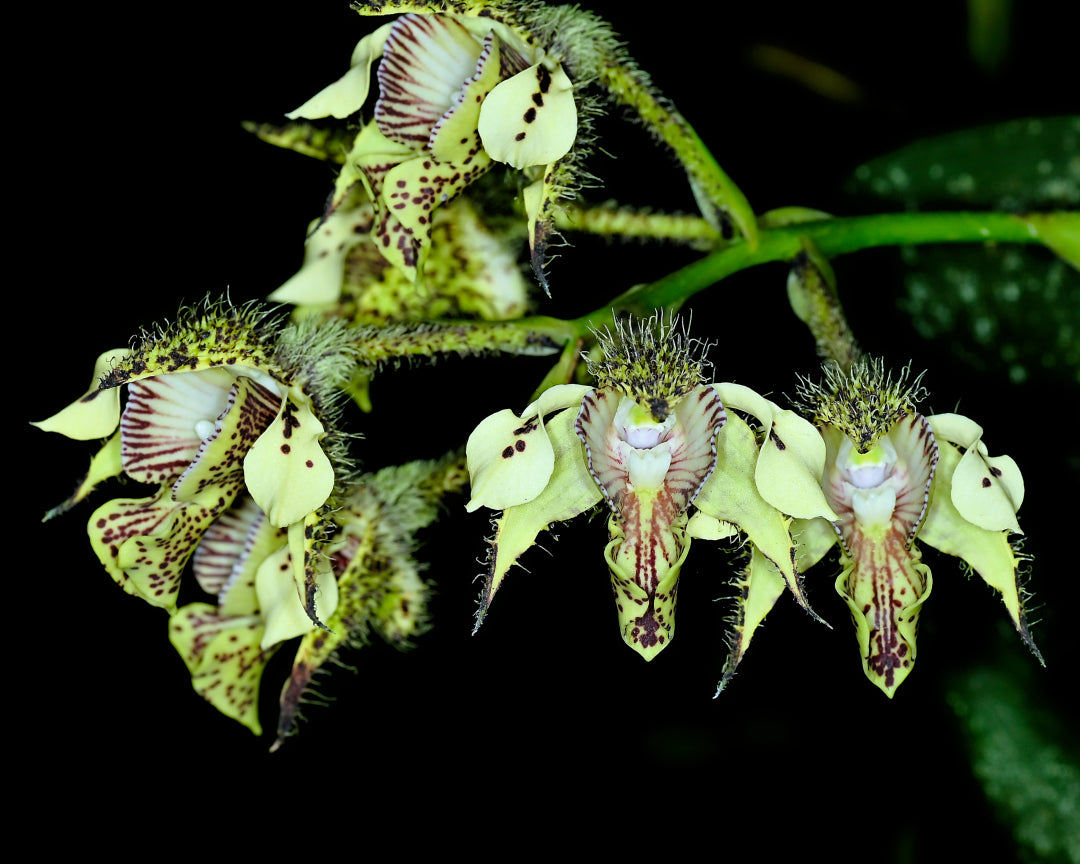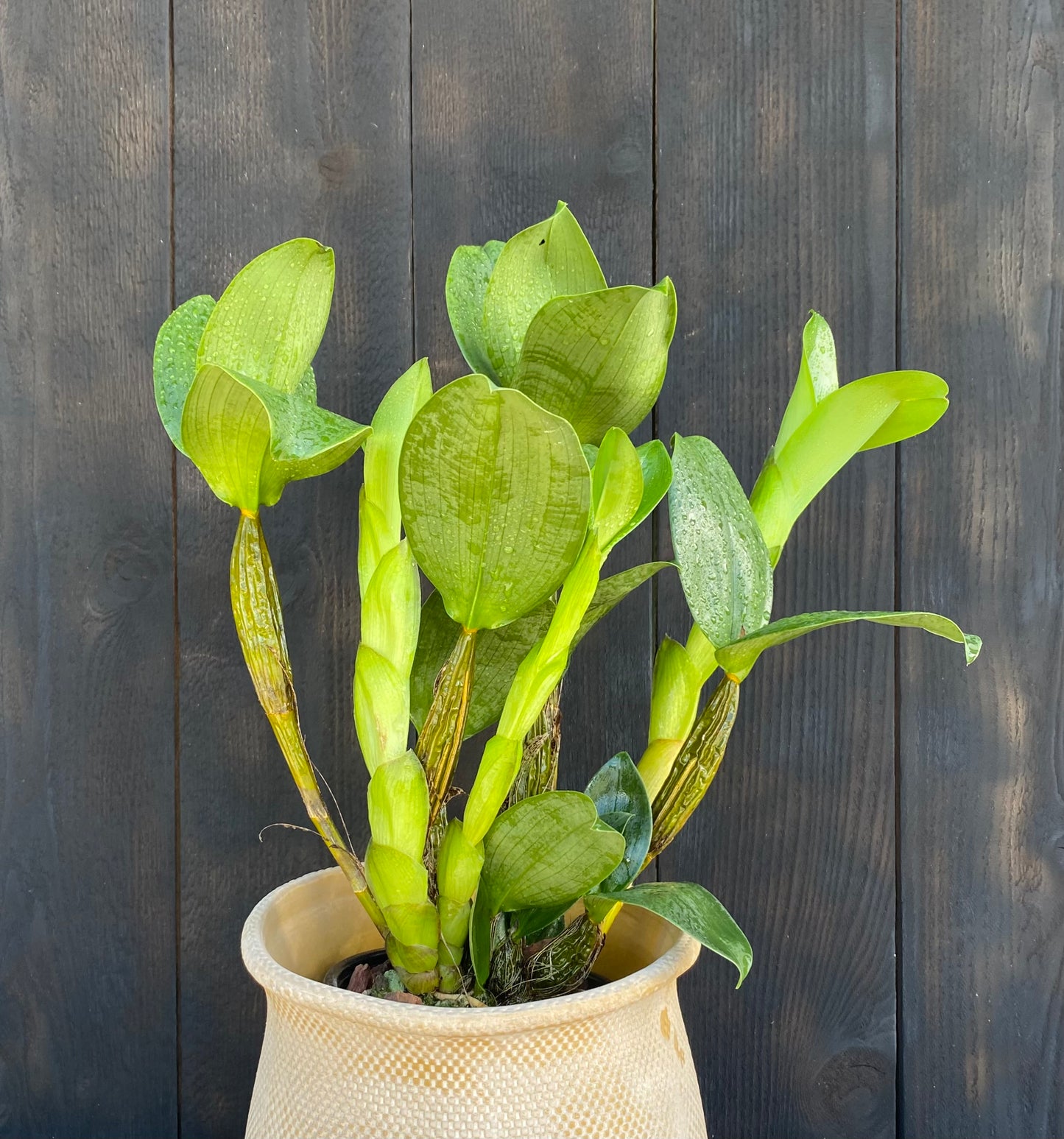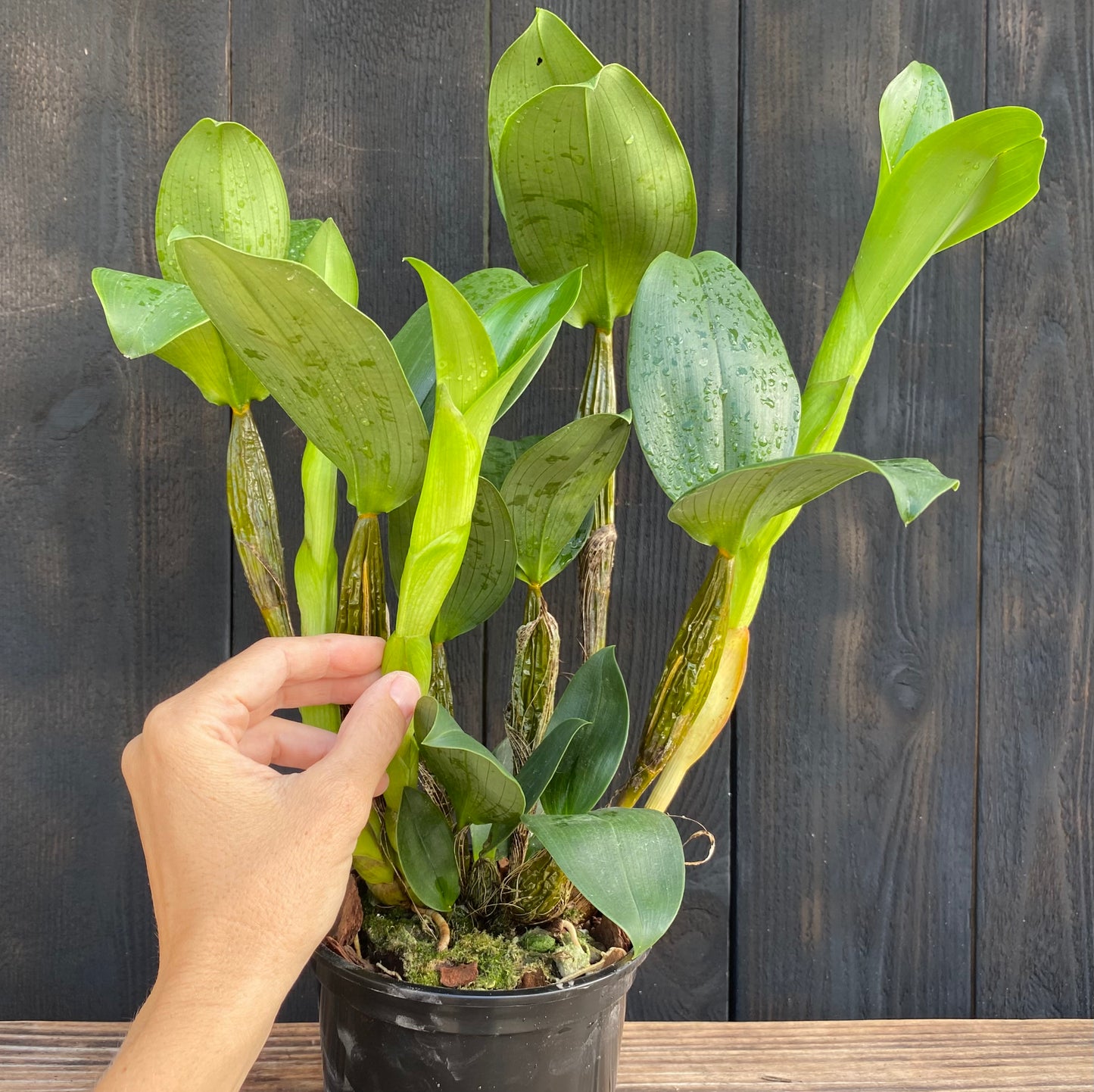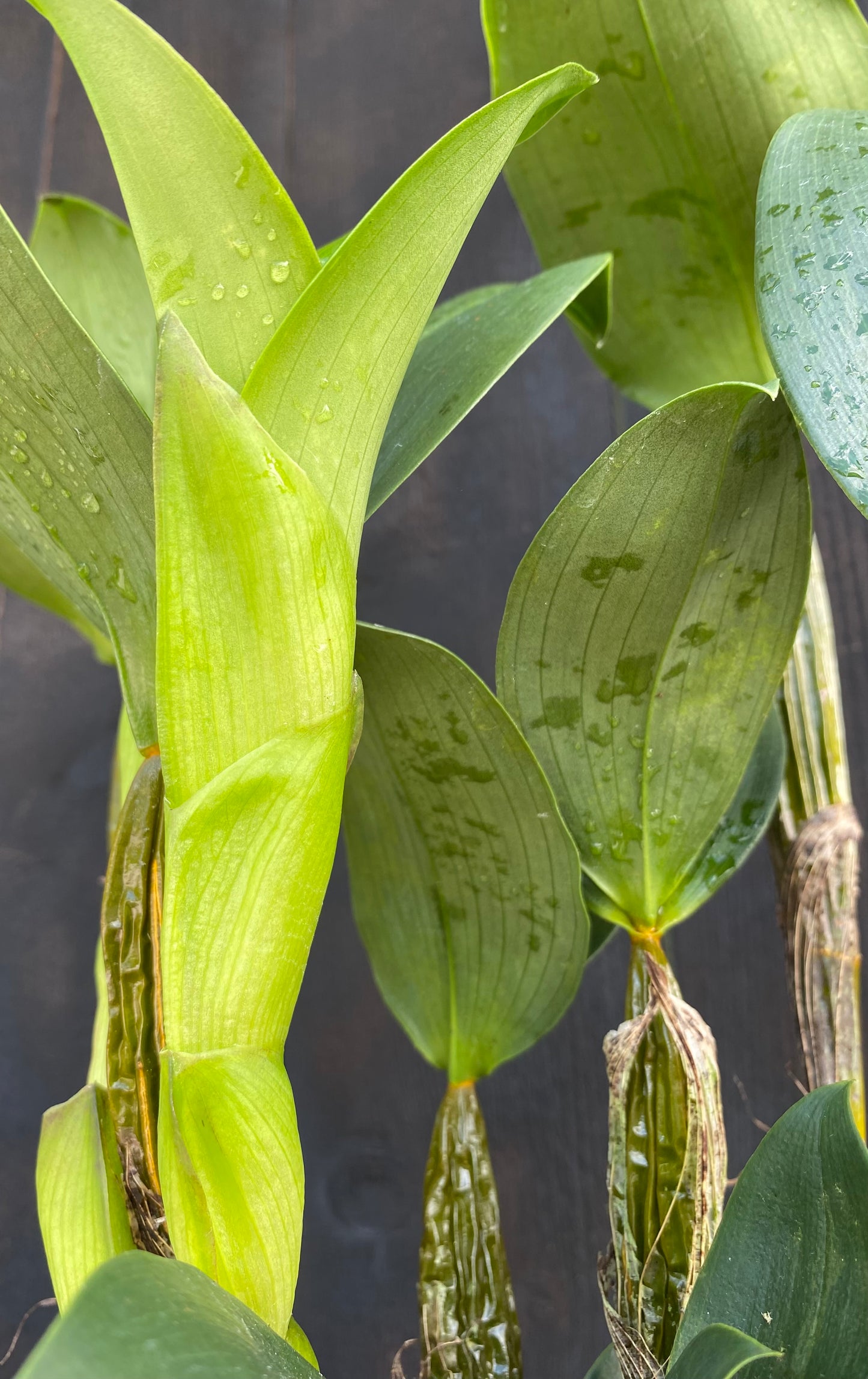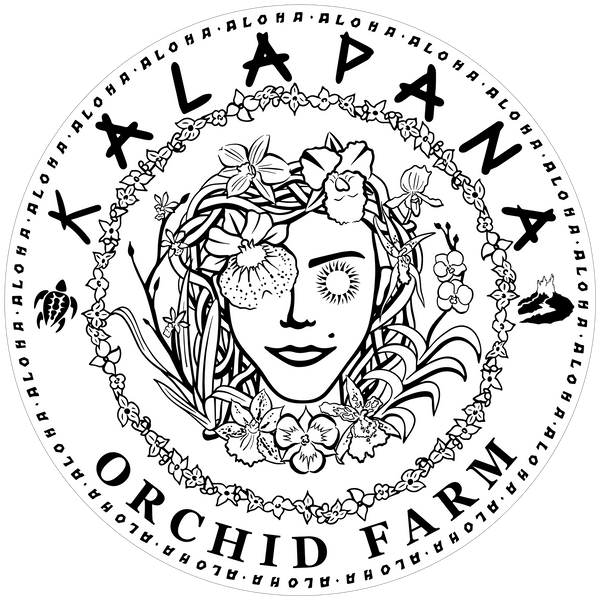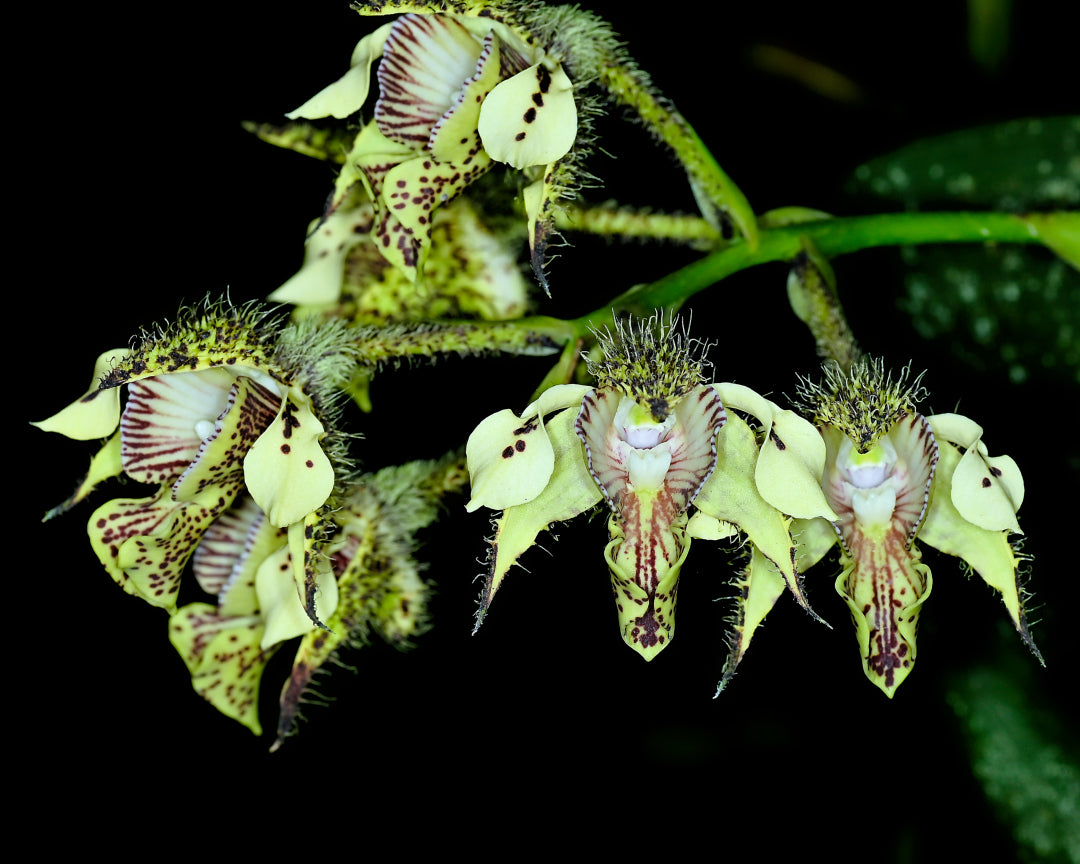Kalapana Orchid Farm
Dendrobium finisterae
Dendrobium finisterae
Couldn't load pickup availability
High in the misty, cloud-draped Finisterre Mountains of Papua New Guinea, where the air is cool and perpetually damp, grows a truly impressive orchid. Clinging to moss-covered tree trunks at elevations between 2,000 and 5,000 ft., this epiphyte was first described by the German botanist Rudolf Schlechter in the early 1900s. He gave it a name that directly honors its dramatic homeland: Finisterre Mountains in Morobe Province.
This is a robust member of the Latouria section of Dendrobium, known for their unique, often antler-like flowers. Den. finisterrae stands out for its sheer presence. The plant forms stout, club-shaped pseudobulbs, or canes, that can reach up to 24 in. tall. These canes are topped with a cluster of two to five broad, leathery, dark green leaves that are quite persistent.
The real show begins with the inflorescence, which arches gracefully from the top of the cane, presenting a cluster of waxy, long-lasting flowers. And when we say long-lasting, we mean it—these blooms can easily persist for three months or more under good conditions. Each flower, about 2 to 3 in. across, is a spectacle of form and color. The sepals and petals are a glistening, chartreuse-green, often with a subtle texture. The prominent, spade-shaped lip provides a striking contrast, typically creamy white with bold, deep violet veining radiating from the center. The whole flower has an almost otherworldly, insect-like appearance, which is a hallmark of the Latouria dendrobiums.
Botanical Description
Plant: A medium to large-sized sympodial epiphyte. Pseudobulbs are clavate (club-shaped), slightly compressed, and can grow 12-24 in. tall. Foliage consists of 2 to 5 ovate to elliptic, leathery, dark green leaves, each approximately 4-6 in. long, clustered at the apex of the pseudobulb.
Flowers: The inflorescence is an axillary raceme, emerging from the nodes near the top of the cane, bearing 5 to 15 flowers. Individual flowers measure 2-3 in. in diameter. Sepals and petals are chartreuse-green, waxy, and have a slightly twisted appearance. The labellum (lip) is large, trilobed, with a white base heavily striated with deep purple or magenta. The flowers are exceptionally durable, often lasting for several months.
Blooming Season: Can bloom at various times of the year, often in the spring and fall.
Care Instructions
Light: Bright, indirect light is ideal. An east-facing window or a shaded south-facing window is suitable. Provide approximately 2,000-3,000 foot-candles. Avoid direct, intense sun, which can scorch the leaves.
Water: Water thoroughly when the potting medium begins to approach dryness. This plant prefers consistent moisture but must have excellent drainage to prevent root rot. Do not allow it to stand in water. Reduce watering frequency slightly during cooler winter months.
Temperature: Intermediate to cool growing conditions are preferred. Daytime temperatures should be between 70-80°F, with a nighttime drop to 55-65°F. This diurnal temperature fluctuation is beneficial for promoting blooms.
Humidity: Prefers high humidity, around 50-70%. If your growing area is dry, use a humidity tray or a humidifier. Good air circulation is essential to prevent fungal issues.
Potting Medium: A coarse, well-aerated epiphytic mix is required. A blend of medium to large fir bark, perlite works well. It can also be mounted on cork or tree fern plaques if high humidity can be maintained. Repot every 2 years or when the medium begins to break down.
Large blooming size plants, offered in 6" pots.
Share
